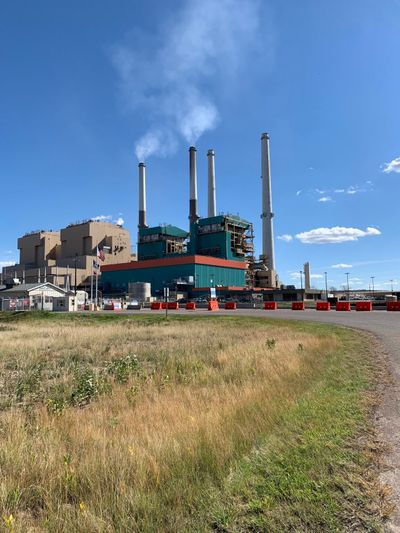U.S. Supreme Court declines to hear Colstrip pollution challenge

The United States Supreme Court will not hear an emergency appeal effort by power plant owners and utility companies that had begged the high court to halt new pollution rules set out by the Biden administration and the Environmental Protection Agency.
In a one-page order on Friday, U.S. Supreme Court Justice John Roberts declined to hear the case, essentially leaving in place new toxic air pollution standards that will fall heavily on Montana’s Colstrip plant.
The decision not to hear the case was part of a one-sentence order simply saying the court had refused to take up the matter, leaving the current rules challenged but in place.
Jo Dee Black, a spokesperson for NorthWestern Energy, stressed the fight is not over yet.
“The MATS Rule challenge is not over. Briefings on the lawfulness of the MATS Rules are taking place at the U.S. Court of Appeals for the D.C. Circuit,” she said. “It will be unfortunate for Montanans if federal rules ultimately require expensive equipment to be installed for a 0.2% increase in emissions efficiency at the Colstrip Plant, from 99.6% to 99.8%. The Colstrip Plant is critical for reliable energy service for our Montana customers.”
Representatives of Talen Energy, one of the power plant’s owners, were not available for comment on Friday afternoon.
In previous court filings, the owners of Colstrip said the new rules fall disproportionately on it, leaving the owners with no choice other than to spend $350 million to upgrade the plant, or shutter it. Colstrip is also routinely identified as one of the dirtiest, most polluting power plants in America, largely because a series of owners have not put in place more modern pollution control systems.
In a brief filed to Roberts, the owners also argued that even if they did invest as much as $350 million to upgrade the plant, the plant’s life expectancy is too short to be able to recoup the cost economically.
The owners of Colstrip estimate that the plant supports 3,000 jobs and $200 million in disposable income.
However, Colstrip has also been targeted because it has failed to install equipment that some watchdog groups say are installed in more than 170 other power plants. They point out that modern pollution controls like a baghouse or electrostatic precipitators are in place across the country, and some of the technology has been commercially available and used for more than 50 years.
Environmental groups and public health advocates cheered the news.
“Today is a victory for our constitutional right to breathe clean air,” said Derf Johnson, deputy director of the Montana Environmental Information Center. “Now that the U.S. Supreme Court has stated that the MATS clean air rule can move forward, NorthWestern Energy must finally plan to address its serious pollution problem at the Colstrip coal-fired power plant. It can no longer pretend that lead and arsenic aren’t harming public health.”
Those groups also released a report from the EPA that outlined the pollutants released by Colstrip from 2012 through 2022:
- 3.3 tons of lead.
- 1.45 tons of arsenic.
- 2.1 tons of chromium.
- 14 tons of manganese.
- 2 tons of nickel.
- 6 tons of selenium.
“Colstrip Unit 4 has the highest emission rate for toxic emissions than any other coal-fired unit in the country. It has struggled to meet the current, more lax standard. Colstrip Unit 3 also releases a significant amount of filterable particulate emissions, ranking third highest emission rate in the nation,” said a press release from MEIC.